Table of contents
Use in the kitchen
The passion fruit described here ( Passiflora edulis ) has a violet (purple or purple) skin that turns brown and looks wrinkled when ripe. How do you eat a passion fruit? To eat it raw, cut the fresh fruit in half and scoop it out like a kiwi . The flesh is yellow-orange and has a jelly-like texture. The shiny black seeds contained in it can also be eaten. 1 Eating them is even recommended because they contain additional secondary plant substances, lipids, proteins, fiber and minerals. 6
In addition to the purple passion fruit, there are other varieties (or types and shapes) that differ in size, taste and skin color. The yellow cultivated variety ( Passiflora edulis forma flavicarpa 2 ) is probably the best known; this is mainly known in the trade as passion fruit. 1 You can find more information in the chapters: Cultivation, Further information .
What does a passion fruit taste like? The taste of the fruit is sweet and sour at the same time and refreshingly exotic. It is reminiscent of a mixture of pineapple, mango and papaya . The purple passion fruit tastes sweeter than the yellow one.
Passion fruit is best enjoyed raw. It is also used primarily for making juice. Both purple and yellow passion fruit can be used to make fruit juice. Due to its higher acid content and juice content, the yellow passion fruit (maracuja) is preferred. Passion fruit juice is refreshing and is an ingredient in the popular multivitamin juice. Passion fruit also tastes good in cocktails, mocktails or smoothies made from fresh fruit and vegetables ( bananas, strawberries ,raspberries, cucumber, spinach and celery ).
For breakfast, passion fruit is great for porridge with linseed or oat flakes, with vegan yoghurt ( soy yoghurt ) and for muesli (such as the Omega-3-rich Erb-Müesli ). It is a popular ingredient in vegan muffins, jam, chutneys or pudding with chia seeds . The flesh of the passion fruit can be made into a puree and used as a filling for desserts such as cakes and raw cakes, or as a topping for panna cotta or tart. In summer, ice cream, especially sorbet, made from these fruits is a delicious refreshment.
Passion fruit gives savory dishes an exotic flavor. It is suitable as a fresh ingredient in salads or for preparing fruity dressings and sauces. Vegan curries (e.g. made from sweet peppers, broccoli, carrots ) can also be flavored with passion fruit puree. The taste of the fruit harmonizes well with coconut milk and curry powder .
Vegan recipe for passion fruit mango ice cream
Ingredients (for 4 servings): 4-6 passion fruits, 2 mangos (organic), 1 tbsp organic lemon juice, 1-2 tbsp agave syrup (depending on the ripeness and sweetness of the fruit), optionally some soy yoghurt .
Preparation: Halve the raw passion fruit, remove the flesh with a spoon and place in a blender. Blending breaks up the seeds so you don't have to remove them. If you prefer a delicate, fine texture, you can optionally press the flesh through a sieve to separate the seeds. Peel the mangos and cut away the seeds. Then chop into small cubes and place in the blender. Add lemon juice and agave syrup and blend. For a creamy consistency, you can add a little soy yoghurt. Pour the fruit puree into an ice cream mold and place in the freezer for around 30 minutes. Then position the ice cream sticks in the middle and freeze for a further 3 hours. An ice cream maker is ideal for making sorbet.
Vegan recipes with passion fruit (raw) can be found under the note: " Recipes that have the most of this ingredient ".
| Not only vegans or vegetarians should read this: Vegans often eat unhealthily. Avoidable nutritional errors . |
Purchasing - Storage
Passion fruit can be bought from most major retailers such as Coop, Migros, Denner, Volg, Spar, Aldi, Lidl, Rewe, Edeka, Hofer and Billa . They are also available in organic supermarkets such as Denn's Biomarkt and Alnatura as well as in exotic supermarkets. The fruit is imported from tropical and subtropical regions, which is why it is available all year round. The main season for imported fruit is from June to February . 20
Both purple and yellow passion fruits are sold. The naming is often imprecise, which leads to confusion. Although the term passion fruit is more commonly used to refer to the fruit with yellow skin, 22,23 it is often used to refer to the purple variant. However, the two varieties can be clearly distinguished by their color, skin and size. 1,2 You can find out more about the distinguishing features in the cultivation chapter.
You can tell the optimal ripeness of a purple passion fruit by its skin: Ripe fruits have a slightly shriveled and brownish skin. In addition, the acid content in the flesh decreases as it ripens. A ripe passion fruit tastes aromatic and sweet with a slightly sour note. Unripe purple passion fruits have an unpleasantly sour taste and a smooth outer skin.
The availability of passion fruit varies depending on the size of the store, catchment area, etc. Our recorded food prices for the DA-CH countries can be found above under the ingredient image - and by clicking you can see their development at different suppliers.
Storage tips
Passion fruit is a climacteric fruit. This means that it continues to ripen after harvest. For a longer shelf life, it is recommended to store the fruit in the refrigerator at low temperatures of 7-10 °C. If the fresh fruit is not quite ripe, it can be stored at room temperature to speed up the ripening process. It is particularly quick if you place it next to fruit that gives off ethylene. These include apples, for example.
The passion fruit itself also gives off ethylene gas. Therefore, it is best to store very ripe fruit separately from the rest after purchase. Note that passion fruit only lasts 7-10 days at room temperature. The larger the fruit, the longer it will last. 2,3 Cut fruit should be eaten as quickly as possible or stored in an airtight container in the refrigerator for a short time.
Ingredients - Nutritional values - Calories
The information on the ingredients of a passion fruit usually refers to the ripe flesh without the peel.
What nutrients does a purple passion fruit have? Raw passion fruit contains 97 kcal/100 g. 4 The average weight of a passion fruit is around 53 g. If you assume that the peel accounts for around 55% of the weight, you get around 23 kcal per piece. 5 According to the USDA, the calorie content of a passion fruit (18 g of pulp including seeds) is 17.5 kcal. The macronutrients are broken down into 23 g of carbohydrates, 2.2 g of protein and 0.7 g of fat per 100 g of passion fruit. The carbohydrates consist of 11 g of sugar and 10 g offiber . 4
Per 100 g, raw passion fruit contains 30 mg of vitamin C (ascorbic acid), which is 38% of the daily requirement. Mangos provide a comparable amount at 36 mg/100g. An American persimmon contains about twice as much vitamin C at 66 mg/100g. Blackcurrants are an excellent source at 181 mg/100g. 4
The potassium content of passion fruit is 348 mg per 100 g. This corresponds to 17% of the daily requirement. This value is comparable to green kiwis (312 mg/100g) and Galia melons (309 mg/100g). Spinach offers almost twice as much potassium at 558 mg/100g. Foods that contain the most potassium are often spices or herbs (eg dried parsley : 2683 mg/100g). However, only small amounts of these are consumed. 4
Passion fruits contain 1.6 mg of iron per 100 g of fresh pulp. This makes up 11% of the daily requirement.Elderberries and aronia berries have similar values. Herbs and spices are a particularly good source of iron, but only eat small portions of them. Dried thyme contains 124 mg/100g. Iron-rich foods that you can eat in large quantities are wholemeal spelt flour (9.7 mg/100g),pumpkin seeds (8.4 mg/100g) or red lentils (7.4 mg/100g). 4
As mentioned, the seeds of passion fruit are edible. They contain a variety of minerals and valuable lipids. The essential fatty acids include linoleic acid, linolenic acid, oleic acid, palmitic acid and stearic acid. Linoleic acid (omega-6) is the most abundant of these. Dietary fiber and secondary plant substances (see below) can also be found in the seeds. If you eat the seeds, you can benefit from their rich nutrient composition. 6
The complete ingredients of a raw passion fruit, the coverage of the daily requirement and comparison values with other ingredients can be found in our nutrient tables. In the article Nutrients explained you will get a detailed insight into the topic.
Health effects
Is passion fruit healthy? Passion fruit has a high vitamin C content and the seeds have a high fiber content. If you eat the cellulose-rich seeds, you can increase your intake of insoluble fiber. This promotes digestion and contributes to optimal intestinal health, not least by preventing constipation and hemorrhoids. 6
Since the kernels contain significantly more linoleic acid (LA, Omega-6) than alpha-linolenic acid (ALA, Omega-3), 4 we recommend a combination with ALA-rich foods, e.g. flax seeds, chia seeds or walnuts .
A study on mice looked at the anti-inflammatory and antinociceptive potential of passion fruit. In three experimental pain models, passion fruit showed pain-inhibiting effects. The researchers found that polysaccharides from dried passion fruit control and minimize the extent of inflammatory reactions by inhibiting the release or synthesis of important inflammatory mediators such as histamine, serotonin, prostaglandin E 2 and interleukin-1β. They also reduce the movement of white blood cells and free radical damage, which leads to less inflammation overall. 7
Secondary plant substances
Many of the health effects of passion fruit can be attributed to the secondary plant substances it contains. Our article on secondary plant substances provides an overview of the classification of substance groups, their occurrence in foods and possible effects on humans.
Passion fruit contains the following secondary plant substances: 6,8,11
- Isoprenoids: Carotenoids (alpha-carotene, beta-carotene, zeaxanthin, zeta-carotene, lycopene, norisoprenoids (alpha-ionol derivatives, beta-ionol derivatives)); terpenoids (linalool, citronellol, geraniol); terpenes (limonene, phytosterols (stigmasterol, campesterol,beta-sitosterol, brassicasterol, cholesterol, avenasterol), nerol, alpha-terpineol and beta-ocimene); steroids; saponins
- Alkaloids: caffeine, theobromine
- Polyphenols : Phenolic acids: hydroxybenzoic acids (4-hydroxybenzoic acid, protocatechuic acid, gallic acid, syringic acid, vanillic acid), hydroxycinnamic acids (caffeic acid (esters of caffeic acid: chlorogenic acid, trans-caftaric acid, rosmarinic acid), ferulic acid, sinapic acid, ρ-coumaric acid) ; flavonoids: flavanols (catechin, epicatechin, epigallocatechin), flavonols (myricetin, rutin, kaempferol, quercetin, fisetin, galangin), flavones (apigenin, luteolin), flavanones (hesperidin, eriodictyol, naringin), flavanonols (taxifolin), anthocyanins (cyanidin, pelargonidin, cyanidin-3-rutinoside, delphinidin), stilbenes (resveratrol, piceatannol); Phytoestrogens: lignans, isoflavones (genistein, daidzein)
However, it should be noted that the composition of the secondary plant substances in passion fruit can vary depending on the variety, time of harvest and growing conditions. Therefore, quantities are only of limited use and should only be understood roughly.
In addition to the edible parts (pulp, seeds and juice) of the passion fruit, numerous studies are also examining the potential of the peel and leaves. These are also a valuable source of secondary plant substances. Studies have shown that the peel has antioxidant, anti-inflammatory and antibacterial substances to offer. 6
The antioxidant activity of the fruit pulp is related to numerous polyphenols. It is known that the antioxidant compounds in passion fruit act as radical scavengers and thus protect against oxidative stress and associated (chronic) diseases such as cancer, Alzheimer's or diabetes. 8
Passion fruit seeds have a high piceatannol content. Piceatannol has shown an antidiabetic effect in several animal models. A study on overweight men recorded an improvement in insulin sensitivity after 8 weeks of supplementation with piceatannol, which is related to the regulation of blood sugar levels. In addition, this polyphenol potentially leads to a reduction in blood pressure and heart rate. However, these results were only found in overweight men. Piceatannol did not show comparable effects in overweight women. The reasons for the gender-specific differences and the mechanisms behind them are still unclear. 9 In rats, vascular-protective and hepatoprotective (liver-protecting) properties were observed. 10
In addition, the fruits were found to have antibacterial properties. Passion fruit inhibited the growth of 17 of the 19 gram-negative bacteria tested. This effect against pathogenic microorganisms results from the large number of secondary metabolites present, including polyphenols, triterpenes, sterols and saponins. 11
Secondary plant substances such as flavonoids show promising effects in the fight against cancer. One study observed antiproliferative properties of passion fruit against leukemia cells. Further studies are needed to precisely characterize the tumor-inhibiting components of the fruit. 12
Dangers - Intolerances - Side effects
People with a latex allergy may experience cross-reactions when consuming passion fruit. This allergic reaction, also known as latex-fruit syndrome, manifests itself in asthma and gastrointestinal complaints, among other things. 13
Folk medicine - natural medicine
Passion fruit is used in South America in folk medicine to relieve anxiety, insomnia, asthma, bronchitis and urinary tract infections. 2 The herb of another species is used as a medicinal plant (Passiflorae herba) (see Further information).
Ecological Footprint - Animal Welfare
The ecological footprint of a food depends on various factors. The type of agricultural production (conventional vs. organic), seasonal, regional, domestic production or import by truck, ship or plane, different types of packaging and whether the goods are fresh or frozen play a decisive role. 14
According to a Chinese study, the CO 2 footprint of Colombian passion fruit is 0.11 kg CO 2 eq/kg (focusing on agricultural production); 77.5% of this is due to the use of fertilizers. Pineapple and mango had a smaller footprint at 0.06 and 0.04 kg CO 2 eq/kg respectively. 16 Depending on the source and study criteria, different footprint figures emerge - for comparison: The Carboncloud website gives the CO 2 footprint of passion fruit from Peru as 0.77 kg CO 2 eq/kg (data applies to cultivation). 17 For Philippine fruit, Carboncloud puts the footprint at 0.19 kg CO 2 eq/kg (data applies to cultivation). 18 However, transport also plays a significant role in the case of imported tropical fruit. If the transport-related emissions of imported passion fruit are taken into account, the value is significantly higher (e.g. according to the website goClimate, 2.30 CO 2 eq/kg). 24 For the ingredient pineapple, we explain the influence of different means of transport such as ship or aircraft on the size of the footprint.
Another study examined, among other things, the pesticide consumption of different fruit production systems in Colombia. In addition to passion fruit, the focus was on mango, pineapple, tamarillo, avocado, Andean blackberries, Cape gooseberries (Physalis) and lulo. 15 It was found that passion fruit, pineapple and tamarillo generated the highest pesticide consumption. 15 We therefore recommend buying passion fruit from organic farming.
We were unable to find any significant figures on the water footprint of passion fruit. Other tropical fruits show the following values: Mangos have a high water consumption of 1800 l/kg, similar to avocados with 1981 l/kg. 21
For detailed explanations of various sustainability indicators (such as ecological footprint, CO2 footprint, water footprint), see our article: What does the ecological footprint mean?
Worldwide distribution - cultivation
Passiflora edulis plants originate from Brazil and are found in subtropical and tropical climates. They are grown commercially in Australia, South Africa, Kenya, Papua New Guinea, New Zealand, Sri Lanka and India. In the United States, purple passion fruit is cultivated mainly in Florida and California. The European fruit market imports a large proportion of fresh fruit from Kenya, South Africa, Zimbabwe and Burundi. New Zealand exports raw passion fruit mainly to the United States and Canada. Ecuador is currently the world's most important exporter of juice and concentrate to Europe. 2
Cultivation - Harvest
The passion fruit plant or passion flower is a perennial vine that climbs upwards with the help of tendrils and becomes woody as it grows. Its leaves are evergreen, three-lobed and finely toothed. They are arranged alternately and are 7.5-20 cm long. A characteristic feature is that the leaves are deep green and shiny on the upper side and matte on the underside. At the branching points (nodes) of the shoots there is a solitary, fragrant flower with a diameter of 5-7.5 cm. 2
The passion flower consists of several characteristic parts and has a strikingly complex structure. It has five greenish-white sepals, which form the outer petals, and five white petals, which lie inside. In the middle of the flower is a fringed crown of straight, pointed rays that are colored white. The flower also contains five stamens with large anthers and a central ovary. There are three purple, branched styles that end in a stigma. The flower is often surrounded by three bracts, which are there to protect the flower and support it. 2
Passion fruit is usually propagated by seeds. However, this method has the disadvantage that it leads to considerable variability in the composition and properties of the fruit. Passion fruit is occasionally propagated vegetatively via rooted cuttings and grafting. 2
One year after planting, the plant begins to bear fruit for the first time. Its short lifespan ends at 3-5 years. The highest yield can be achieved in the second or third year. On average, 60-70 days pass from pollination to fruit ripening. In tropical growing areas, harvesting can take place all year round, while in subtropical regions production is limited to spring and summer (season). 2
For commercial cultivation, two forms or cultivars are primarily used, which are sometimes also referred to as varieties (var.): the described purple-colored ( Passiflora edulis forma edulis ) and the yellow passion fruit ( Passiflora edulis forma flavicarpa ). The main distinguishing feature is the color of their skin, which inspired the adjective flavicarpa ("yellow-fruited"). They can also be distinguished from one another by their size. A purple passion fruit is round and weighs 24-61 grams. Its dark purple skin shrivels when fully ripe. The fruits of the yellow variety have an oval shape and a softer skin that shrinks less during the ripening process. They are significantly larger and weigh 44-160 grams. 2
The skin of both fruits is about 3-6 mm thick and has a whitish layer inside, similar to the mesocarp (white skin) of citrus fruits. Underneath is a cavity filled with oval seeds (kernels). These are covered by a gelatinous, yellow-orange seed coat (arillus). The seeds of the purple fruits are black, while the yellow passion fruit has dark brown kernels. 2
The advantages of the yellow cultivar are that it produces a higher yield of fruit and more pulp. In addition, it grows faster, is more resistant to soil fungi and bears fruit for a longer period of time.
Hybrid varieties have now been developed that combine the characteristics of the yellow and purple passion fruit. These hybrids use the advantageous characteristics of both parent plants. The crossed plants have a higher resistance to diseases and higher yields and offer an aromatic taste reminiscent of the purple passion fruit. 2
Further information
The passion flower belongs to the Passiflora genus and is the largest in the Passifloraceae family with around 500 species. Around 50-60 of these species bear edible fruit. However, most of them are only available on the local market in South and Central America and the West Indies.
In addition to the two best known forms (see chapter cultivation) of Passiflora edulis, the following Passiflora species are known: Sweet Granadilla ( Passiflora ligularis 22,23 ), Giant Granadilla ( Passiflora quadrangularis, whose fruits can reach a weight of up to 3 kg) and Curuba ( Passiflora tripartita ). Instead of the typical round shape, the Curuba has elongated, oval fruits that are reminiscent of bananas, which is why it is also called banana passion fruit. 2,23
In a medical context, people talk about the calming effect of the passion flower. This usually refers to the passion flower species Passiflora incarnata, which is closely related to Passiflora edulis . The passion flower herb (drug name: Passiflorae herba) is used as a medicinal plant and is made from the leaves and flowers (sometimes also fruit parts) of the Passiflora incarnata . 19
Alternative names
The synonym granadilla is used non-specifically for both the purple and the yellow passion fruit, which makes it difficult to distinguish it from the 'sweet granadilla' ( Passiflora ligularis ) 22. In German-speaking countries, purple passion fruits are called purpurgranadilla, while yellow ones are known as 'yellow granadillas'. 23 In English, the purple fruit is known as purple passion fruit, from which the yellow passion fruit is distinguished; occasionally one comes across the name sour passion fruit for the species P. edulis (also to distinguish it from the sweet granadilla = Passiflora ligularis ). In Portuguese, the passion fruit is non-specifically called maracuja; in Spanish, the yellow one is often called maracuyá, the purple one gulupa and the Passiflora ligularis granadilla, 22 to avoid confusion.
Other uses
When juice is extracted, around ⅔ of the waste is produced, consisting of peel and seeds. In Hawaii and Brazil, the carbohydrate-rich peel is used as a supplementary feed for animals. 1 The oil extracted from the seeds is used in cosmetic products.
Bibliography - 24 Sources (Link to the evidence)
| 1. | Apotheken-umschau de: Maracuja oder Passionsfrucht? |
| 2. | Rodriguez-Amaya DB. Passion Fruit. In: Siddiq M (Ed.) Tropical and Subtropical Fruits. John Wiley & Sons, Ltd; 2012. S. 321–332. |
| 3. | Plantura garden: Passionsfrucht: Alles zur Ernte, Lagerung & Zubereitung. |
| 4. | USDA (United States Department of Agriculture). Nährwerttabellen. |
| 5. | Thokchom R, Mandal G. Production Preference and Importance of Passion Fruit (Passiflora edulis): A Review. Journal of Agricultural Engineering and Food Technology. 2017;4(1):27–30. |
| 6. | Fonseca AMA, Geraldi MV et al. Purple passion fruit (Passiflora edulis f. edulis): A comprehensive review on the nutritional value, phytochemical profile and associated health effects. Food Research International. 2022;160:111665. |
| 7. | Silva RO, Damasceno SRB et al. Polysaccharide fraction isolated from Passiflora edulis inhibits the inflammatory response and the oxidative stress in mice. Journal of Pharmacy and Pharmacology. 2015;67(7):1017–1027. |
| 8. | Pereira ZC, Cruz JMDA et al. Passion fruit (Passiflora spp.) pulp: A review on bioactive properties, health benefits and technological potential. Food Research International. 2023;166:112626. |
| 9. | Kitada M, Ogura Y et al. The Effect of Piceatannol from Passion Fruit (Passiflora edulis) Seeds on Metabolic Health in Humans. Nutrients. 2017;9(10):1142. |
| 10. | Ishihata A, Maruki-Uchida H et al. Vascular- and hepato-protective effects of passion fruit seed extract containing piceatannol in chronic high-fat diet-fed rats. Food Funct. 2016;7(9):4075–4081. |
| 11. | Dzotam JK, Touani FK, Kuete V. Antibacterial and antibiotic-modifying activities of three food plants (Xanthosoma mafaffa Lam., Moringa oleifera (L.) Schott and Passiflora edulis Sims) against multidrug-resistant (MDR) Gram-negative bacteria. BMC Complement Altern Med. 2016;16:9. |
| 12. | Kuete V, Dzotam JK et al. Cytotoxicity of methanol extracts of Annona muricata, Passiflora edulis and nine other Cameroonian medicinal plants towards multi-factorial drug-resistant cancer cell lines. SpringerPlus. 2016;5(1):1666. |
| 13. | Brehler R, Theissen U, Mohr C, Luger T. 'Latex-fruit syndrome': frequency of cross-reacting IgE antibodies. Allergy. 1997;52(4):404–410. |
| 14. | Reinhardt G, Gärtner S, Wagner T. Ökologische Fussabdrücke von Lebensmitteln und Gerichten in Deutschland. IFEU Institut für Energie - und Umweltforschung Heidelberg. 2020. |
| 15. | Graefe S, Tapasco J, Gonzalez A. Resource use and GHG emissions of eight tropical fruit species cultivated in Colombia. Fruits. Juli 2013;68(4):303–314. |
| 16. | Chen X, Xu X et al. Carbon footprint of a typical pomelo production region in China based on farm survey data. Journal of Cleaner Production. 2020;277:124041. |
| 17. | Carboncloud. Passion fruit, whole fruit. 2024. |
| 18. | Carboncloud. Passion fruit. 2024 |
| 19. | Arzneipflanzenlexikon. Passionsblume. |
| 20. | Gartenjournal net: Passionsfrucht-Saison: Wann ist die beste Zeit zum Genuss? 2023. |
| 21. | Mekonnen MM, Hoekstra AY. The green, blue and grey water footprint of crops and derived crop products. Hydrol Earth Syst Sci. 25. Mai 2011;15(5):1577–1600. |
| 22. | Fischer G, Casierra-Posada F, Piedrahita W. Ecofisiología de las especies pasifloráceas cultivadas en Colombia. In: Miranda D, Fischer G et al. Cultivo, poscosecha y comercialización de las pasifloráceas en Colombia: maracuyá, granadilla, gulupa y curuba. Sociedad Colombiana de Ciencias Hortícolas: Bogota;2009:45-67. |
| 23. | Bundesanstalt für Landwirtschaft und Ernährung (BLE). Passionsfrüchte. Produktinformation. 2015. |
| 24. | goClimate de: CO2-Rechner für Lebensmittel & Essen. Maracuja. 2024. |

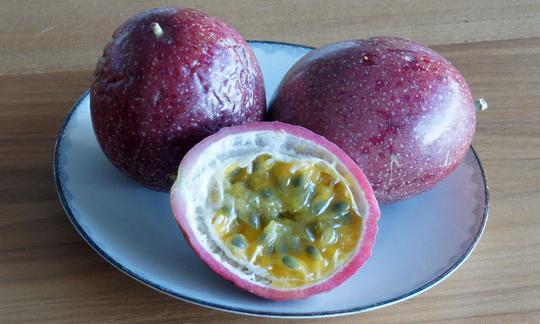

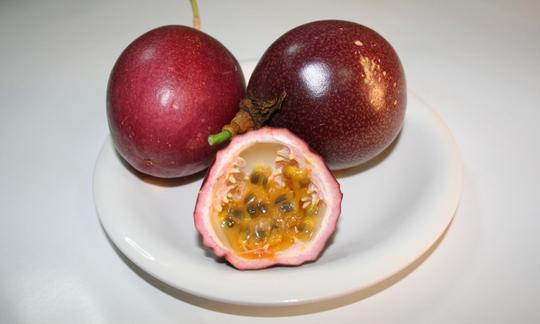

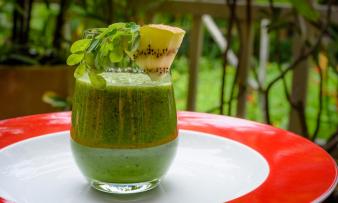
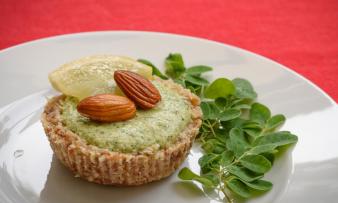
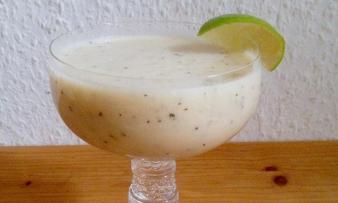





Comments